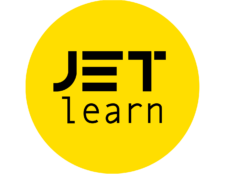
Articles
How Remote Learning Is Changing How We Think About College Expenses
By eLearning Inside
January 26, 2021
After the COVID-19 pandemic, many students and institutions have learned that remote learning is not only possible, but advantageous in many cases. Colleges and universities have scrambled to put together virtual classes and online learning curricula – and they’ve been mostly successful.
While some schools have gone back to regularly scheduled in-person classes (with new requirements like social distancing and mandatory face masks), others have remained mostly (or fully) remote. The entire wave has caused millions of people to question the conventional cost structures of higher learning institutions.
Is college worth going into $30,000 or more in debt? Is there a better way to get access to education? Is online learning going to become the new standard?
Access to Facilities
One of the biggest variables to consider is access to facilities. At a conventional university, students live in onsite dormitories. They rely on the institution’s cafeterias and other resources. They attend classes in person in grand halls, peruse local parks and walkways, visit massive libraries, and even access recreational facilities like gyms and swimming pools.

All these amenities are nice, but are they really necessary? When you’re paying $10,000 or more per semester, and $8,000 for that is directed to superfluous extras, you start wondering whether it’s truly worth it.
Overall Accessibility
Remote learning has also awakened many to the possibilities of increased accessibility. With online learning, more people can get the college education they’ve always wanted, in ways that were previously unreachable.
For example:
Location agnosticism. You don’t have to live on campus to attend online video classes. You don’t even have to live in the same state. You can attend practically any university, anywhere in the world, under this model.
Timing and flexibility. You also don’t have to drive or walk anywhere; you can attend classes from the comfort of your own home. And in many cases, you can access recorded lessons, so you have even more scheduling flexibility.
Better platforms and resources. Online learning also introduces some platforms and resources that may be better for the educational experience; you can view recorded lectures as often as you need, talk to other people in forums, and even submit your homework digitally.
Student Perspectives
So how do students feel about this? Many students thrived on the in-person experience that colleges offered. They like living in dormitories, meeting friends in the cafeteria, socializing in buildings, and walking around campus. For these people, tuition is worth it, and online learning is a major loss.
But for others, student debt and the cost of tuition are bigger concern.
According to EducationData.org, student loan refinancing and loan forgiveness are options that can cushion the blow, but even so, millions of college graduates spend decades recovering from this financial burden. Understanding that they can get the same education and the same degree, while sacrificing a handful of unnecessary extras, they like the idea of paying much less.
University Perspectives
Existing universities are in a trickier position. Collecting tuition isn’t necessarily about making a profit; it’s about supporting salaries and raises, building new and better facilities, supporting more educational resources, and growing in status on a national or international level. Converting to online classes and cutting tuition costs could represent a massive restriction in revenue, which could make it hard to maintain their current footprint and force them to change their strategy. Unsurprisingly, many institutions are reluctant to do this.
The Rise of New Options
Even more significantly, we may see the rise of new learning options. Seeing the dynamic between existing college students and universities, enterprising educators may be motivated to create online-exclusive learning institutions where people can get a full secondary education for a reasonable amount of money. This would introduce more competition into the world of academic institutions, resulting in more available options for students, lower tuition costs all around, and higher pressure to innovate on all sides.
Where Does It Go From Here?
So where does it go from here? Nobody is certain what the long-term future of COVID-19 looks like, but with the rollout of early vaccines, it appears as though the worst phases are behind us. Universities won’t feel as much immediate pressure to host online classes, but many will likely continue this trend, or at least keep it available as an option for those who want it.
In the near-term, it will be difficult for entrepreneurs to develop the resources and authority necessary to be seen as legitimate educational institutions. Accordingly, the influx of online learning competitors may be slow. But in the long-term, it’s likely that students will be thinking more critically about the tuition expenses they face and how those funds are being used. And soon, there may be educational options for all levels of needs and all budgets.
Featured Image: Okan Yıkmış, Unsplash.









[…] Read the full story by eLearningInside News […]